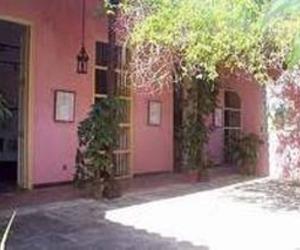The most filmed town in Cuba
- Submitted by: manso
- Arts and Culture
- Cinema
- 08 / 29 / 2010

28 de Agosto 2010. Havana. – Proudly for its inhabitants, the town of San Antonio de los Baños in the province of Havana, is the most filmed town in Cuba and as an evidence of that there is a plaque in the Jose Marti park of that town, which states that.
The inscription mentions the decisive contribution of the inhabitants and institutions of the Town of Ariguanabo River to the work of the International Cinema and Television School (EICTV, after its initials in Spanish), located in that territory and emphasizes that the cultural history of that place is present in the work of the students of the school.
The territory of south Havana was also the stage of a cinema movement in the fifties due to the Pro-Cine Ariguanabense Association. However, the passion for the seven art is much older.
Cinema precedents in San Antonio de los Baños
Consulted sources indicate that the first projector installed in San Antonio worked from May 1908. It was authorized to its owner, Manuel Garcia, to install a boiler and a dynamo with the purpose of offer functions in Guillermon Street, current Avenue 45 and Mac Kinley, currently 64 street.
Before the EICTV was founded, a group of young people from Ariguanabo dreamed with creating and establishing a cinema school in that Havana municipality to become the Mecca of cinema in San Antonio de los Baños.
The initiative starts in 1952 with Eulalio Cruz, who loved to make movies, together with a group of young people, who back then, were not more than ten, ad were certain that the utopia could become a reality.
The first movie that was shot was a 20 minutes short movie, inspired in the topic of the Non Identified Flying Objects, titled "El Invasor Marciano" (The Martian Invader), with the participation of Osvaldo Ordaz, Angel Gutiérrez, Agustín de la Osa, Vicente Cruz, Antonio Alfonso, Roberto Puyada, Artemio Valdés, Ricardo de Armas and José de Armas.
This group was active during the fifties, shooting several fiction short movies, silent, such as " La Herencia Maldita", "Lobos de mar", "Contrabanda", and " El Cayo de la Muerte", the later a 36 minutes movie in color, directed by Vicente Cruz and produced by Jesús Mejías.
The presence of San Antonio in Cuban movies
A research carried out by the students of the School, showed that the 8 of September 1930 was premiered at the Rialto theater of Havana, the movie "La Virgen de la Caridad", directed by Ramón Peón and produced by BPP Picture. This is the only Cuban silent movie completely preserved in the Cuban film library, with great quality. Many of its scenes were shot in San Antonio.
In the movie "El Romance del Palmar", premiered in 1938, which is considered a box office success in Cuba and abroad, were used different scenarios from Ariguanabo area, among them, the tobacco selection with the participation of the unforgettable Rita Montaner and the prestigious actress María de los Ángeles Santana.
Up to now, out of the 82 movies created by the students of the school, 31 have received awards, for a 38.75 per cent. The
movies, which have won the biggest number of awards are El encanto de la luna llena, Amores, Talco para lo negro, Soy un niño todavía, Comida caliente, Sabor a mi and Un Cielo lánguido y oxidado.
In addition of being the birth place of Cuban singer songwriter Silvio Rodríguez and of having the majestic crying willows, trees that surround the Ariguanabo river, which crosses the town, San Antonio de los Baños can with justice boast of being the most filmed town in Cuba.
Autor: Teresa Valenzuela Source: www.radiorebelde.com.cu |
Translation: Rodney Lopez (Cubarte)
Comments